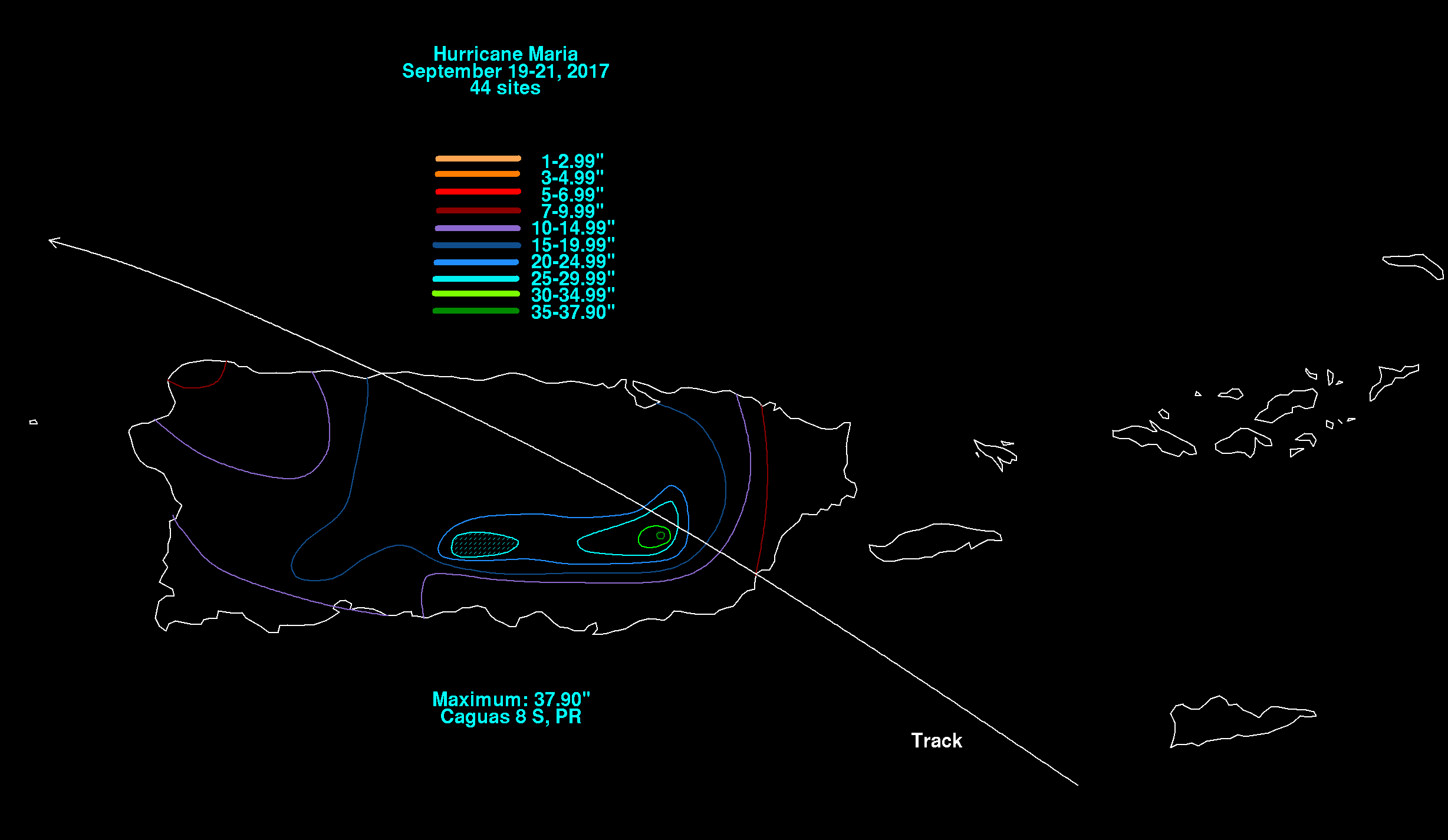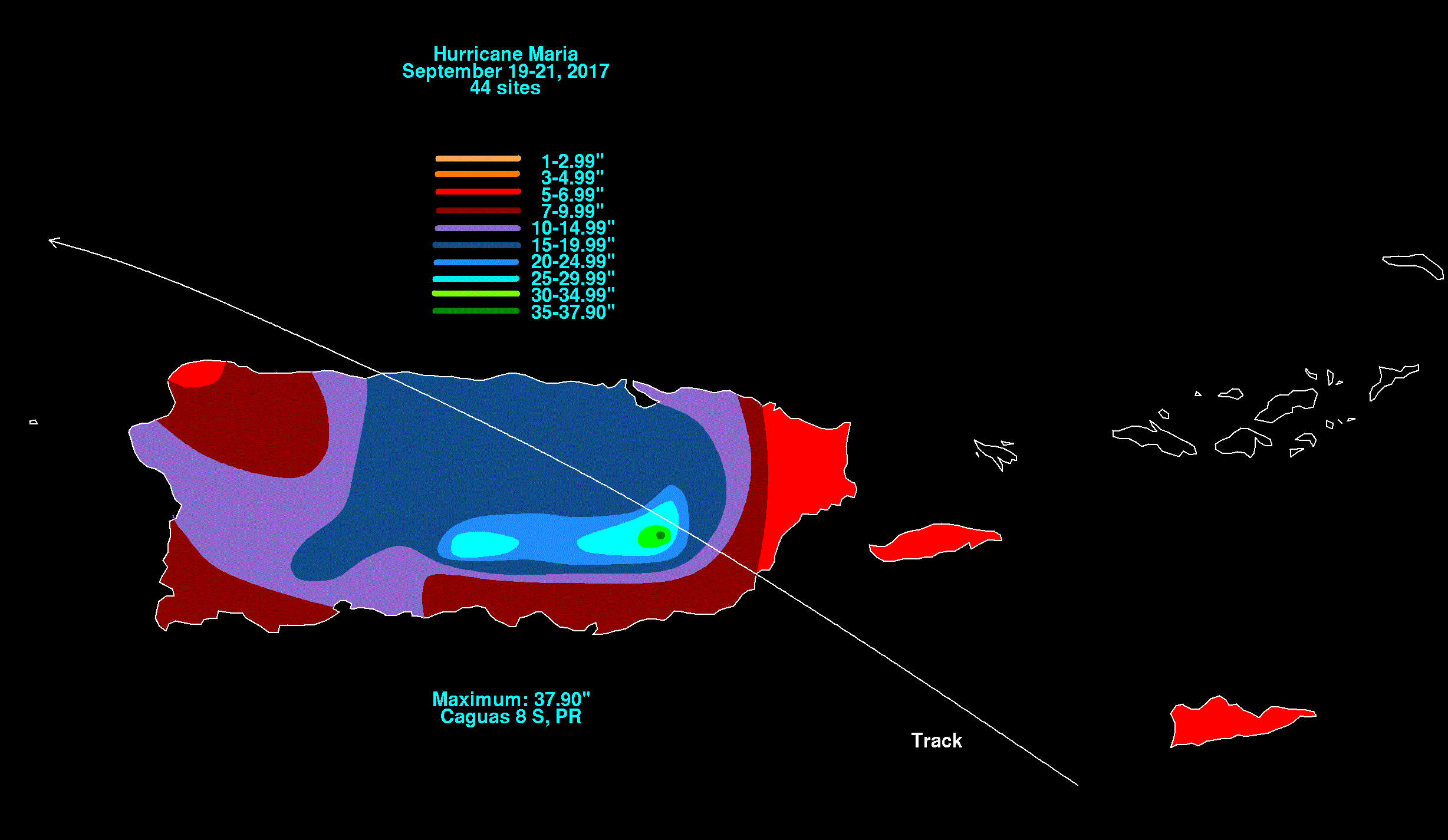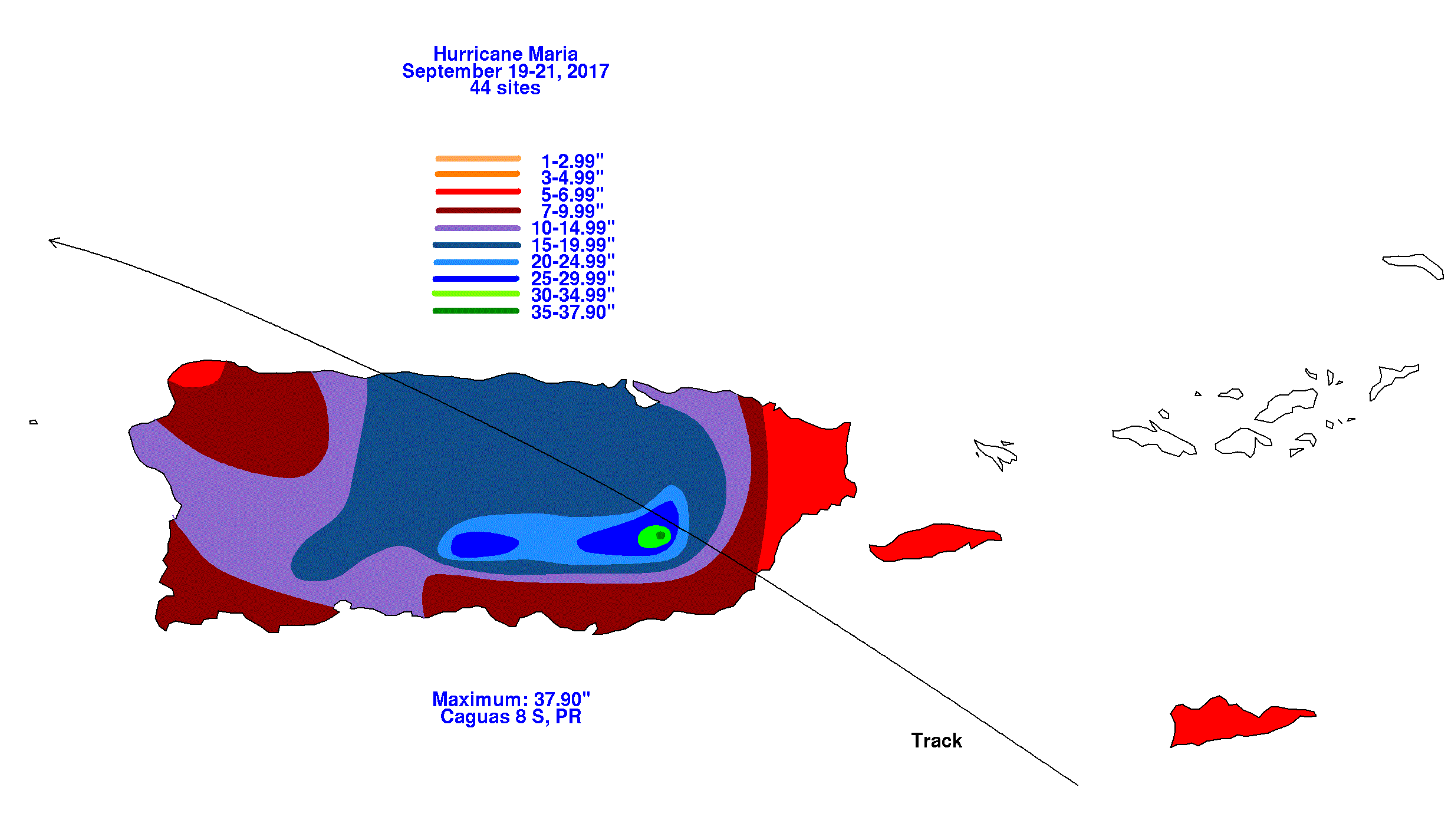A tropical wave moved off the west coast of Africa on September 12th. By the 15th, showers and thunderstorms began to
organize, and a tropical depression formed on the morning of the 16th about 580 miles east of Barbados. By afternoon,
Maria had become a tropical storm. Moving west-northwest, the system achieved hurricane strength on the 17th. Rapid
intensification continued, with Maria becoming a major hurricane on the 18th before striking Dominica. The dangerous
hurricane reached its peak intensity during the night of the 19th while moving just south of St. Croix. Maria was becoming
a larger hurricane as it struck Puerto Rico on the morning of the 20th. It crossed the island diagonally, emerging as a
weaker hurricane on the 20th. The storm recurved through the western subtropical Atlantic, becoming a major hurricane
once more as it moved northward. On the 24th, Maria weakened and its center passed offshore Cape Hatteras as a borderline
hurricane early on the 27th. Turning sharply to the east, the storm accelerated as a weakening tropical storm. The cyclone
became extratropical southeast of Cape Race on the 30th, and dissipated while approaching Ireland on October 2nd.
The graphics below show the storm total rainfall for Maria, which used information from the National Weather
Service River Forecast Centers, Forecast Offices, and CoCoRAHS.
 |
 |
 |